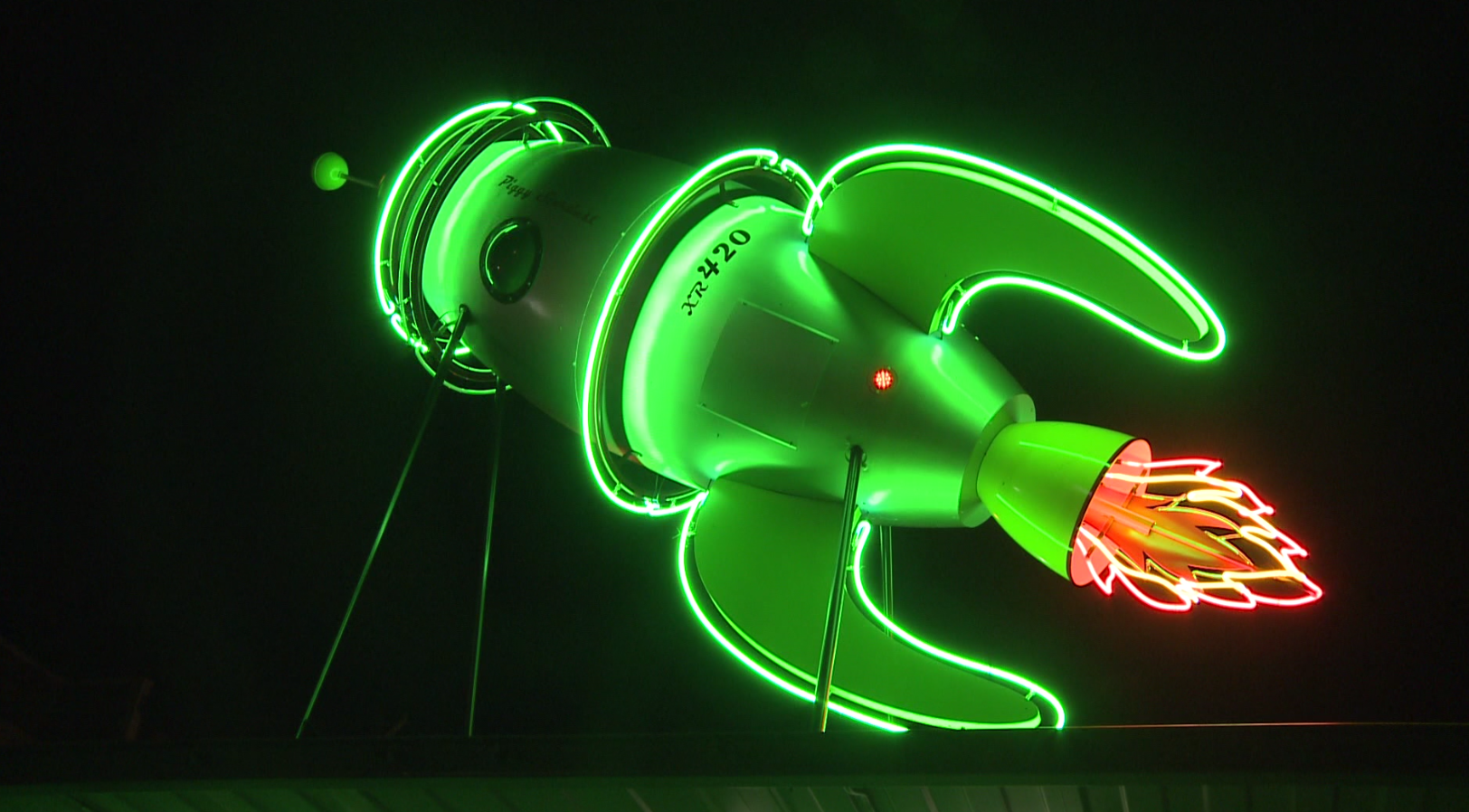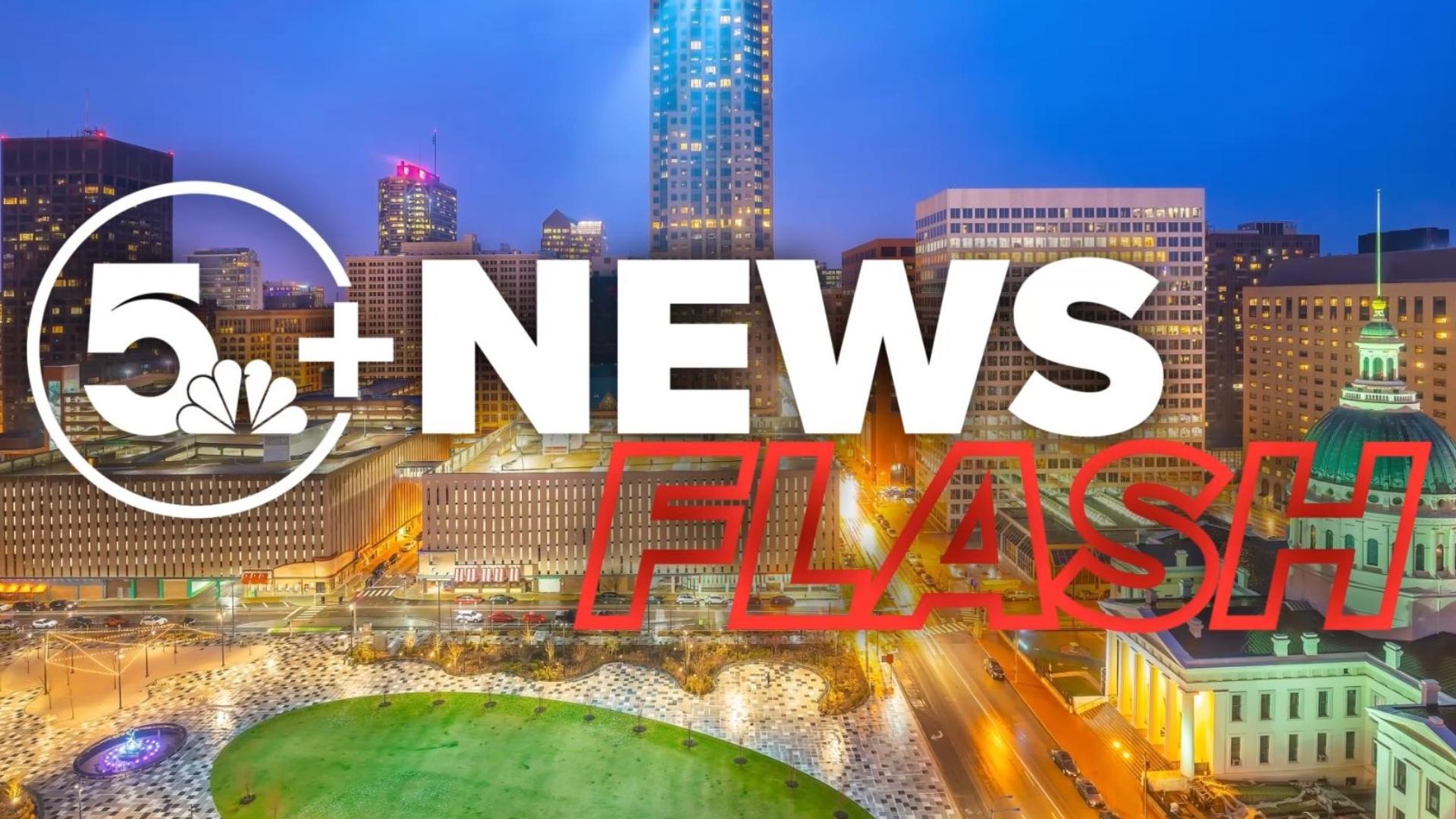St. Charles businessman David Hutson is turned on by neon. He owns Neon Times where he creates and restores neon signs.
“People have a great affinity and affection for neon,” said Hutson. “It is a very seductive art. It is eye candy.”
Restoration has become Hutson’s passion as a member of the Neon Heritage Preservation Committee (NHPC) of the Route 66 Association of Missouri. Beginning in 2008, the NHPC is a perfect 10-for-10 in obtaining grants from the U.S. Park Service’s Route 66 Corridor Preservation Program.
“The grant programs are always 50 percent so the owner has to put up 50 percent of the repair cost and the National Park Service will put up the other half,” said Jim Thoele, chairman of the neon preservation committee. “It was begun in 1999 for 10 years. It was renewed in 2009 for 10 years and unfortunately it’s probably going to come to an end in 2019 but at that point we will begin to look for other grants.”
The NHPC’s first successful neon restoration is familiar to anyone who drives Chippewa Street in South St. Louis. When John Schwarz and his brother bought the Donut Drive-In, the business's neon sign was non-functioning after windstorm damage and days away from becoming scrap metal.
“The sign didn’t work at all,” said Schwarz. “It was basically a house for local pigeons.” With half the money coming from the National Park Service, the NHPC restored the Donut Drive-In sign.
“Any time you can renovate something and bring it back to life is important,” said Schwarz. “Route 66 was here before the interstate, Chicago all the way out to California. Along the way were all these businesses with neon signs.”
Other regional signs rescued by the neon preservation group include the Luna Café in Mitchell, Illionis, the Munger Moss Motel in Lebanon, Missouri, the Skylark Motel sign in St. Clair, Missouri, and the Crestwood Bowl in Crestwood, Missouri. The committee’s most recent restoration came all the way from Chicago. The huge, 70-year-old sign from Chicago’s famed Chicken Basket Restaurant needed $30,000 of work.
"The condition of the sign was more deteriorated than we had been told,” said Hutson. “The interior structure of the sign had to be rebuilt. Electrical codes have changed. Neon transformers have gotten smarter. There are certain adaptions that we had to make in order for the neon to remain lit.”
Recently the Chicken Basket was loaded onto a flatbed and driven back to Chicago, where it’s once again lighting Route 66, inviting travelers inside for a meal.
“When people tour Route 66, this is personality. This is what they see,” said Hutson. “Once upon a time, getting a neon sign was like the mark of real success in the business. You started a business and then you could put a neon sign in the window or even on the outside of the building and the signs really were architecture.”
The Missouri History Museum recently concluded a year-long Route 66 exhibit featuring a number of vintage neon signs, like the 'CHASE' letters that once lit the top of the Chase Hotel.
“I think neon technology is really important to us as an institution to hold onto and as a culture to hold onto because it was so important in places like Route 66,” said Sharon Smith, a museum curator. “Neon really took on the life of calling people off the road into their establishment whether it was a place to eat or a place to stay.”
Webster Groves native George Wedel was feeling nostalgic when he visited the Route 66 museum exhibit during its final week. As a teenager, Wedel hitchhiked along Route 66 all the way to California. “It’s part of history. It depicts a particular era that we live through and the evolution of signs.”
For more information about the Neon Heritage Preservation Committee, www.missouri66.org.
“We are preserving history,” said Hutson. “We want to see neon survive.”
Photos: Iconic Route 66 motels


